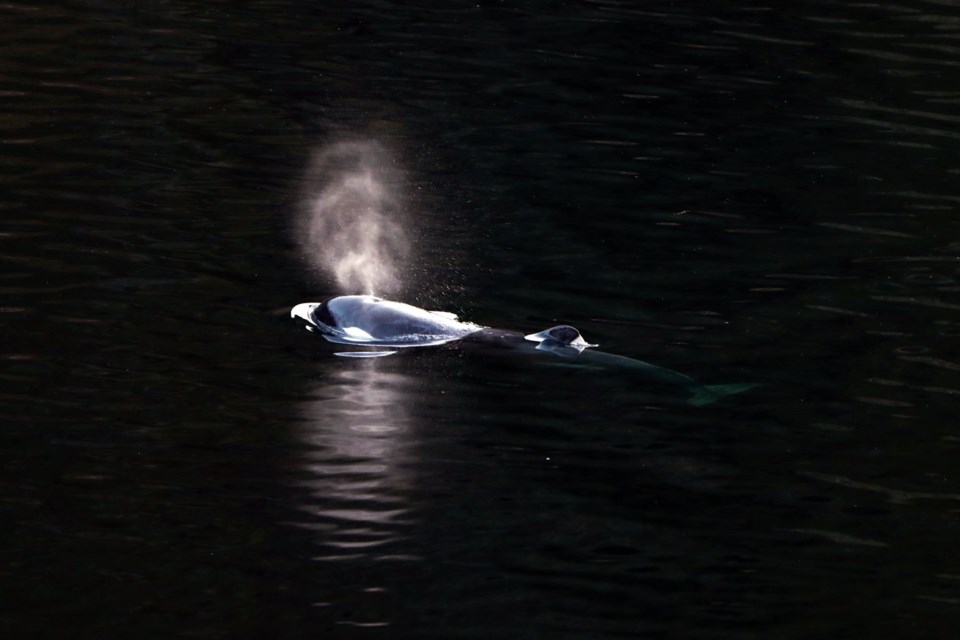VICTORIA — A whale research group that was involved in efforts to rescue an orphaned orca calf from a Vancouver Island lagoon says she has not been seen since May 10, despite multiple recent sightings of her family members.
A statement from Bay Cetology on Thursday said the two-year-old female killer whale known as kwiisahi?is or Brave Little Hunter could be travelling with an unsighted pod, moving between groups of orcas or "she is gone."
The statement said there have been several documented sightings of the calf's maternal family and related groups of Bigg's killer whales since she swam free of the lagoon near the village of Zeballos on April 26.
But there have been no sightings of kwiisahi?is for almost eight weeks by Bay Cetology, Fisheries and Oceans Canada or other whale spotters.
"(We) have collectively identified many other killer whales since mid-May, including kwiisahi?is's natal group, her great grandmother's group, her auntie's group as well as other groups known to frequent the west coast of Vancouver Island. Kwiisahi?is was not with any of these groups," said Jared Towers, Bay Cetology's executive director.
Towers, who spent several weeks in Zeballos working on a rescue strategy for kwiisahi?is, said the orcas sighted since May comprise only a portion of the coast's Bigg's killer whale population.
"It is possible that kwiisahi?is is travelling with any group of killer whales that have not been seen over the past few months, including either of her great aunt's groups," he said.
"It is also possible she is moving between unrelated groups or that she is gone."
Towers said the research group doesn't think the orca calf would have died before the end of May because of her body condition when she was last sighted, and the fact that she had been showing interest in prey since returning to open water.
Towers said it's likely that sometime in mid-May, kwiisahi?is joined another orca group or moved on from the area around Esperanza Inlet where she was last seen.
Kwiisahi?is was trapped in the lagoon for more than a month after the death of her pregnant mother, which became stranded on a rocky beach at low tide and died.
Towers said adoption into killer whale groups is common, but usually only occurs if it does not affect the survival of more closely related members.
He said it is also becoming more common for young Bigg's killer whales such as kwiisahi?is to branch out on their own for extended periods.
"These youngsters may set off on their own intentionally while others could be left with other whales on purpose or accidentally," said Towers. "In many cases these whales find their way back to their natal group while in other cases they disappear altogether and are eventually presumed deceased."
He said he is aware of two B.C. cases in which lost young orcas ended up reuniting with their families or other orcas and are now considered healthy, with one subsequently giving birth to two calves.
"The efforts to encourage kwiisahi?is to open water were done so to give her the best chance for re-integration into her community," Towers said.
This report by The Canadian Press was first published July 4, 2024.
Dirk Meissner, The Canadian Press




